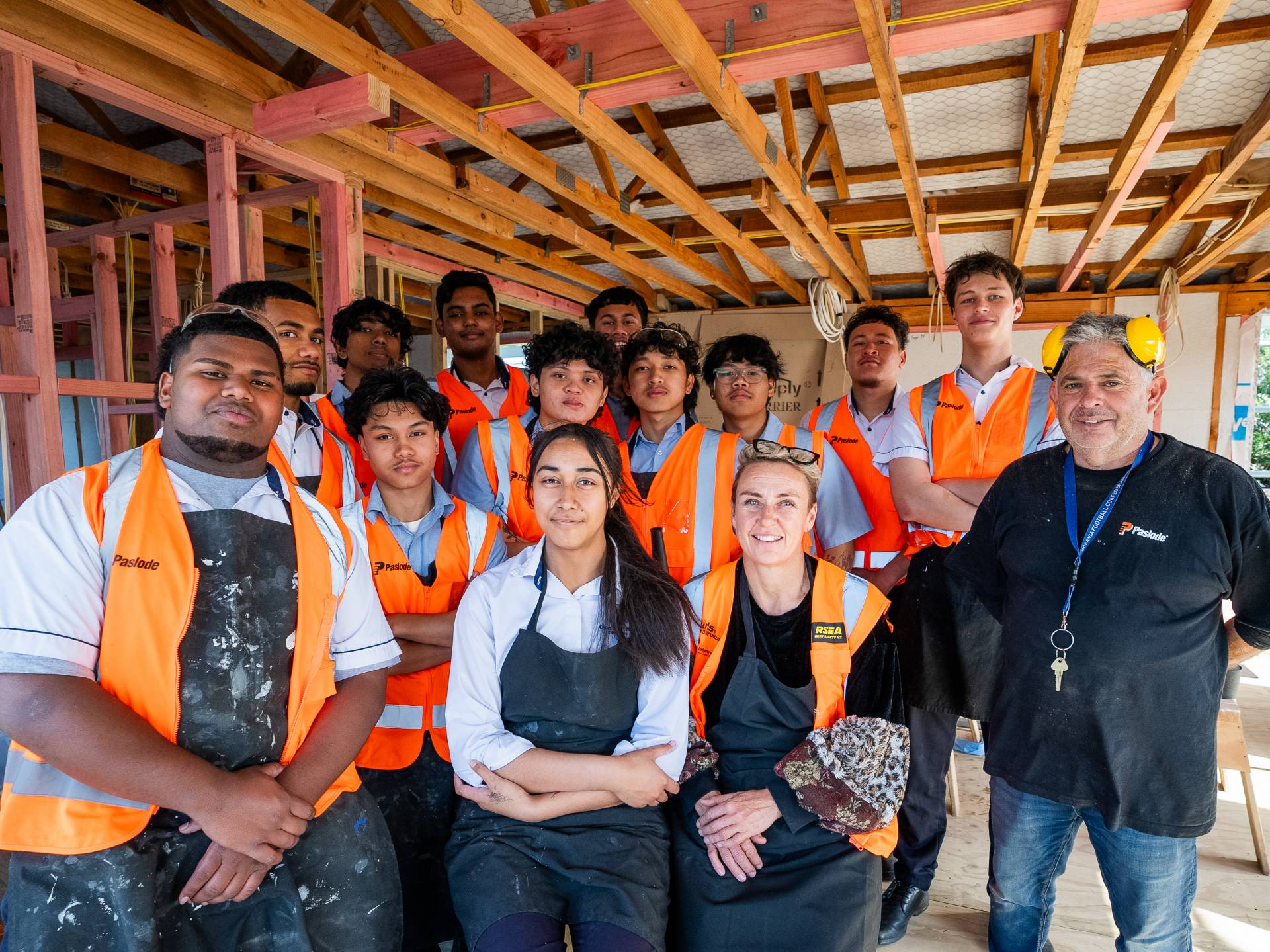|
It’s a striking sight: an entire home on the back of a truck being transported through Auckland overnight. Take a closer look and it gets more impressive – because relocating this home means unlocking urban development, protecting the environment and providing student pathways to construction careers. Twenty-seven older state houses from Lavinia Crescent, Mangere, needed to be removed to make way for up to 90 new terraces and stand-alone homes, along with upgraded infrastructure, through Mangere Development – our large-scale project that aims to enable up to 10,000 new homes for the community. But instead of demolition or deconstruction, four of these houses were carefully loaded onto trucks and taken away to be renovated. “This is what gives me purpose. This is why our relocation programme was created,” says Rachel Trinder, Waste Minimisation and Site Clearance Manager at Kāinga Ora. Where Kāinga Ora needs to redevelop land we already own, Rachel’s team looks at relocating or deconstructing homes. As well as creating better environmental outcomes – with up to 80 percent less waste going to landfill – relocated homes are supplied to iwi or training providers. “I’m really passionate about environmental outcomes, but not only that – training outcomes and pathways where these students can learn some really awesome skills,” says Rachel. Real-life work skills Of the four homes removed from Lavinia Crescent, three went to Ama Training Group. Led by Mike Murray, Ama focuses on providing industry training to Māori and Pacific whānau. A site to renovate the homes in Ranui, West Auckland, was provided by deconstruction company TROW Group. “We’ve got a programme here where we’re trying to support rangatahi to get work skills,” Mike says. “We train them, but we want them to be trained with relevant work skills.” Ama has partnered with Stronghold Group to manage and oversee the home renovations, providing learning opportunities for students along the way. “Our aim is to renovate them to a high standard,” Mike says, “and then on-sell them to whānau who are looking for affordable homes.” ‘Magic’ at One Tree Hill The fourth home was delivered to One Tree Hill College, where more than 60 students are working alongside a licensed builder on a complete renovation. Head of Trades Charlotte McKeon is leading the project – while simultaneously completing her architecture degree at The University of Auckland – and was on school grounds before dawn to see the home arrive. “I was so excited to see that this house was ours,” she says. “It meant we were going to be able to move our learning from a lower level to a much higher level, and therefore adequately prepare our students for apprenticeships. It was magic.” Using high-quality building materials supplied by a long list of sponsors, the school plans to complete the home and sell it at auction in early 2025 – helping to fund a similar project next year. 60,000 tonnes recycled As well as encouraging training opportunities, relocation means Kāinga Ora can provide more homes where they’re needed while also giving older houses new life elsewhere. “It also allows some really decent environment outcomes,” says Rachel. In the year to June 2024, Kāinga Ora prevented nearly 60,000 tonnes of waste from going to landfill – almost as much as recycling the Auckland Sky Tower three times. Over the past three years, nearly 260 homes have been relocated from Kāinga Ora properties to places like One Tree Hill College and Ama Training. For those same three years, more than 137,000 tonnes of waste was diverted – or 12,400 tipper trucks full of materials that didn’t go to landfill, including: · 73,779 tonnes of concrete · 2,831 tonnes of timber · 269 tonnes of windows and doors · 1,140 tonnes of steel · 21,300 tonnes of fill |
